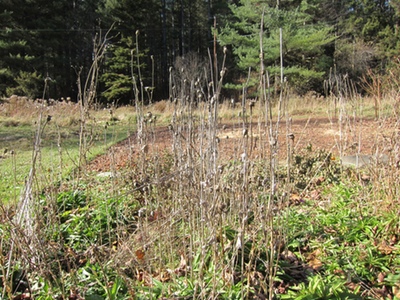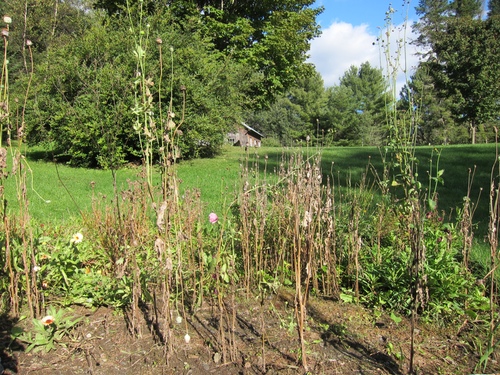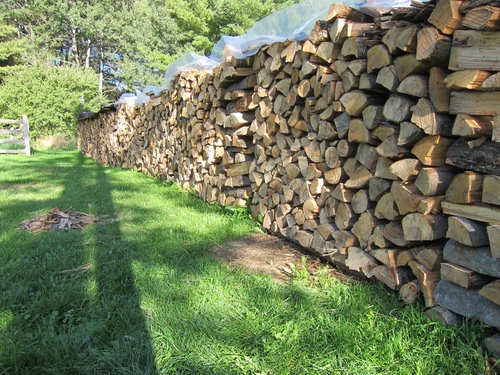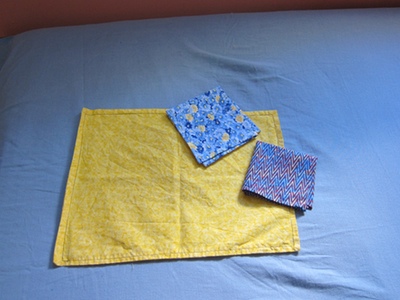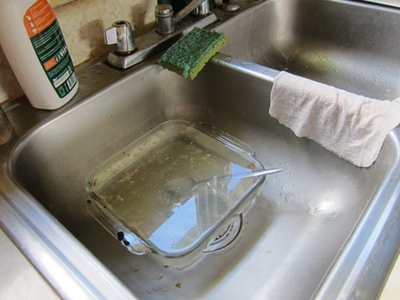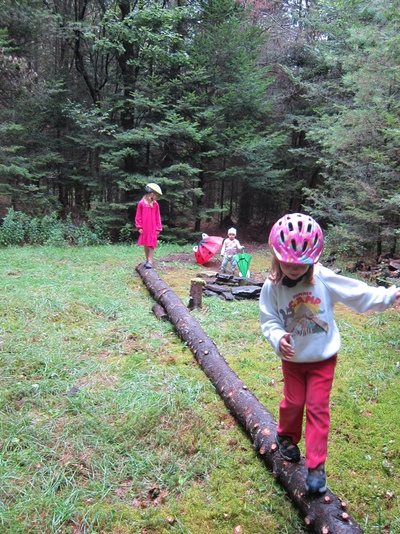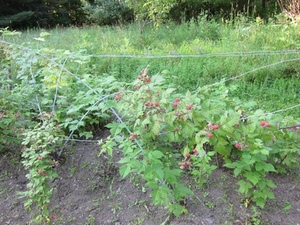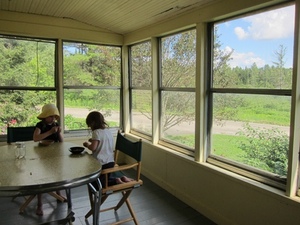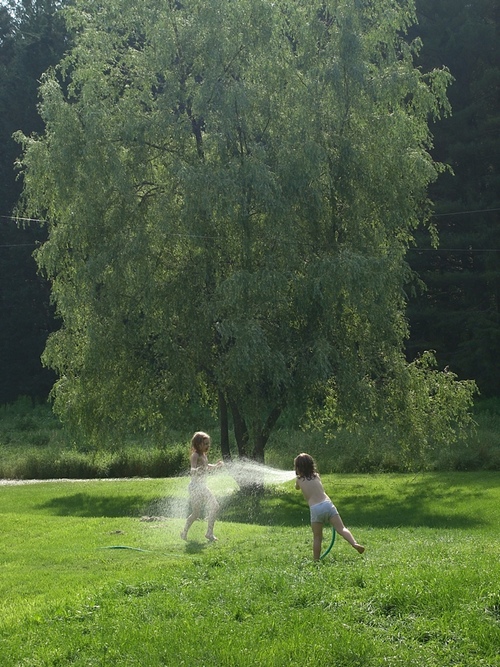Screen time tends to
be a sensitive topic that often leaves parents feeling defensive. Please note
that I do not mention whether we do or do not allow screen time for our
children, or if we do, what kind or how much. This post is not meant to address
or judge any individual situation; rather, I am interested in exploring the
topic of screen time at a more global level, and reflect on my own observations
in hopes of articulating my concern about the impact of screen time on
children.
----------------------------
Recently, my friend posted a link on Facebook to this
article. It is a short piece in which Susan Linn argues that screen time deprives
kids of the opportunity to be creative, which is detrimental to development. Here
is an excerpt that captures the main point:
A commercialized,
screen-saturated culture deprives children of what’s essential to creativity:
time, space and silence. Children constantly bombarded with stimulation are so
busy reacting that they never learn how to generate. Instantaneous access to an
endless array of videos, television, apps and games may stave off boredom. But
those stretches of having “nothing to do” are exactly what foster the creative
intersection of children’s inner world and their immediate surroundings.
As with everything, there is a range of tolerance among
parents when it comes to screen time. There are, of course, the two extremes –
those who prohibit any screen time and those who allow a free-for-all, but most
parents fall somewhere in the middle, acknowledging that screen time generally
isn’t good for young children, but still allowing it in moderation due to the
reality of our culture.
For example, it is pretty common for kids to watch TV here
and there so the parents can take a shower in the morning, respond to an
important work email, make a few quick phone calls, or prepare dinner late in
the afternoon. The TV/Computer/iPhone is the perfect babysitter – it is available
on demand, captivating, and free. In
other words, it is a sure thing - parents can do what they need to do, knowing
their kids are occupied and safe. On a day-to-day basis, it doesn’t seem like
such a bad thing, to allow a little screen time in order to get things done,
especially if parents are conscientious about what they allow their children to
watch. Many TV shows are gentle, benign stories, and there are hundreds of
educational apps that teach kids about music, nature, math, art, reading, etc.
In other words, the content isn’t detrimental in any way. In fact, in the
comments section of Linn’s article, some argue that screen time may even be
beneficial, and that technology not only allows for creativity, but also allows
for better learning.
So, assuming screen time
occurs in moderation and parents carefully select screen-based activities that
are age appropriate and educational, can screen time be a good thing? I think it is necessary to
look at (a) what the child is getting
out of screen time, (b) what the child isn’t
getting out of screen time, and (c) what the child could be doing instead.
The answers will vary depending on the
type of screen time. During a TV show, children passively watch a
two-dimensional story play out. The benefit may be a lesson in morals (two
friends work through a conflict), or the presentation of factual information
(the life cycle of a butterfly). The drawback is the lack of both an imaginative component and a sense of independence. Unlike a book, which has a limited number
of images for a few selected scenes of the story, a TV show provides continuous
imagery covering every single moment, leaving no room for imagination. While a
nature show on the life cycle of a butterfly may present valuable information, the show progresses at a set pace that does not allow the child time to focus in on and examine any one image, as he/she might choose to do when reading a book or observing a butterfly in the backyard.
For an “educational” app, however, there may be additional
benefits. The child may have the opportunity to create a picture using an art
app, or use problem-solving skills in a game that requires completing a puzzle
to save a princess. But still, there is little room for
imagination beyond what is already programmed into the app, and in addition, while children
may use their hands to control what happens on the screen, they are not
actually touching anything other than the keyboard, mouse, or keypad. Their
sensory experience is limited to flashing lights and a repetitive audio
response.
All in all, the drawbacks are not actually harmful, but the benefits are not all
that impressive, especially when compared to other options, which brings us to
the third, and really, the most essential question, what could the child
be doing instead? Even if screen time does allow for creativity, problem
solving, and imagination, what is the alternative activity? A simple example is
an art app vs. drawing with crayons and paper. In an art app, children can
create shapes, designs, and even elaborate pictures using a wide range of
colors; it is an open-ended, creative experience. The same is true for drawing
with crayons and paper, but the child also experiences valuable sensory input: the
waxy smell of fresh crayons; the weight of a crayon, with broken pieces being
lighter and harder to grasp than bigger pieces, and bigger pieces snapping
easily if pressed too hard to the paper; the different shades one crayon can
make depending on the pressure applied; the toughness of the paper as it crinkles
or tears when scrubbed on; the pattern that appears through the picture from an
unevenness under the paper – such as crumbs on the table or deliberately
placing a leaf under the paper; the finality of the mark that cannot be erased.
As adults, we take our experiential knowledge for granted, often forgetting
that children do not yet know what we know. Drawing with crayons and paper
offers far more information about the world than the most powerful art app.
Instead of spending time in front of a screen, a child could be building a
spaceship with Legos, setting up a tea party for dolls, creating a swamp out of
the living room, where the floor is quicksand and cushions are land…the
possibilities are endless and they all engage problem solving, social, and
physical skills. Plus, falling into a hardwood floor quicksand pit is a
sensation that a screen simply can’t provide.
But perhaps even more important than the skills children are
gaining through their play is the development of self-reliance. I remember the
boredom of waiting rooms, restaurants, and long car rides. Because complaints
of boredom were ignored, and fidgeting and impatience were considered poor
behavior, my sister and I had to be resourceful. We played tic tac toe and
hangman on receipts found in our mom’s purse, made fortune tellers out of
napkins, perfected our cat’s cradle skills, played hand games, and made up
silly guessing games and songs that got us across three states. Looking back, I
realize now how firmly my parents set the expectation that they were not
available to entertain us or find activities to occupy our time. The responsibility of figuring out how and
what to play fell on us, not them.
Returning to the original question: can screen time be a good thing? Even though screen time in
and of itself is not necessarily harmful, it’s what the child is not doing - the sensory input and physical
experience that the child is not getting - during that time that can be
detrimental to development. Obviously, movie night or enjoying a TV show or app
here and there is not going to cause any developmental delays. But screen time so quickly becomes a habit, a quick fix for boredom, and 30-60 minutes a day – the time it takes to take a shower, answer a few
emails, and make dinner – adds up pretty quickly, especially when free play is
already minimal due to homework (which now seems to start in kindergarten),
afterschool activities, and time spent in the car getting to and from these
activities. In many cases, those 30-60 minutes a parent takes for him/herself may
be the only opportunity a child has
for free play… and in that case, I think screen time, no matter what the show
or app, is not a good thing.



